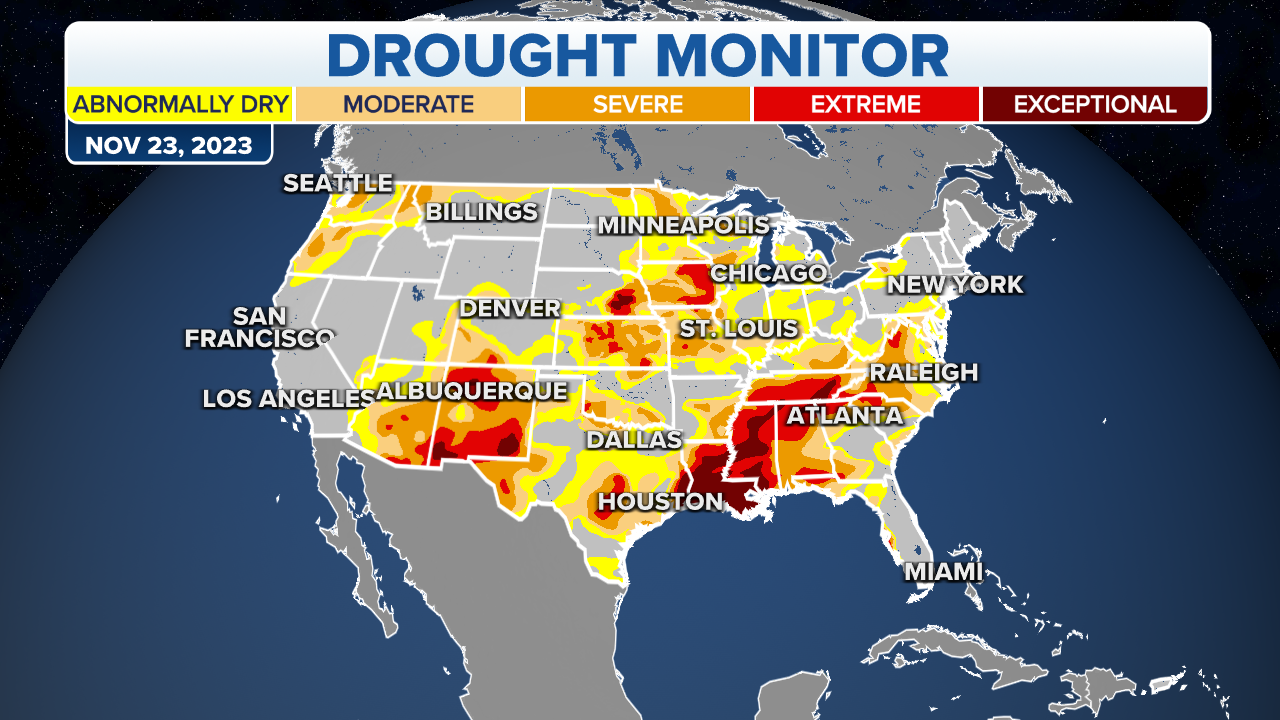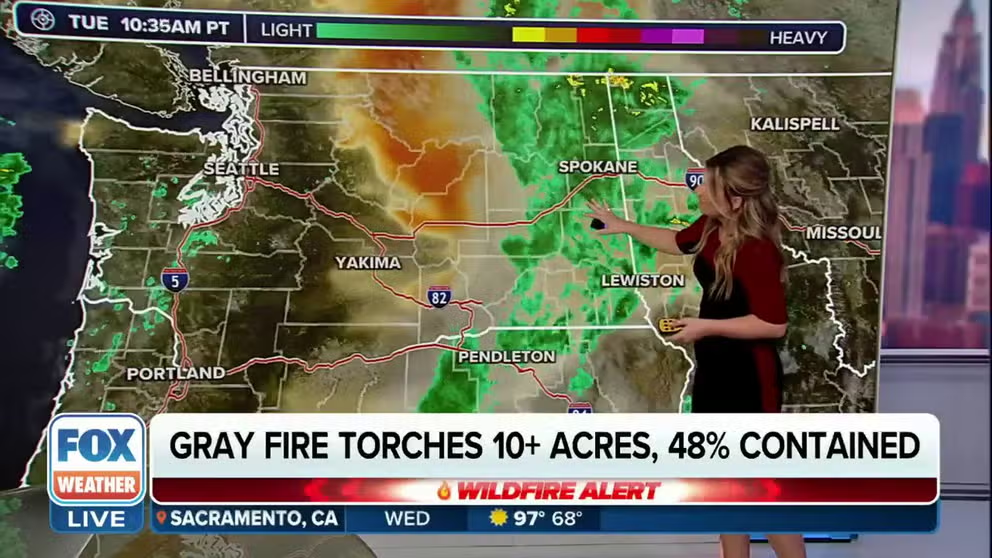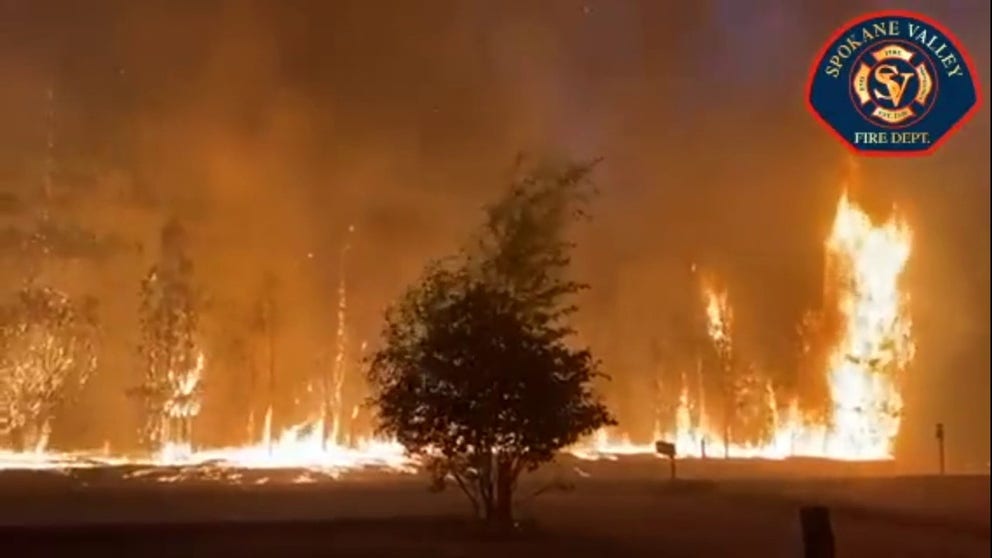Deadly Washington state wildfires fueling air quality advisories in Pacific Northwest
Wildfire smoke is still lingering in parts of the Pacific Northwest, prompting air quality alerts across a few regions of Oregon and Eastern Washington.
Air Quality alerts in place as wildfires rage across Washington
Air Quality Alerts are in place for areas in eastern Washington and Oregon from wildfire smoke. Multiple large-scale wildfires, including the Gray and Oregon fires, continue to burn in Washington.
SPOKANE, Wash. – At least two people were killed and dozens of homes have been destroyed during a series of ongoing wildfires in Eastern Washington that are causing air quality concerns across parts of the Pacific Northwest.
Erratic fire behavior caused both the Gray and Oregon Road fires to burn thousands of acres and forced entire towns to evacuate. Washington Gov. Jay Inslee declared a state of emergency for Spokane County due to the high-risk fire weather and to help coordinate multi-agency efforts to battle the fires.
Washington’s Department of Natural Resources estimated the Gray Fire around the city of Medical Lake burned approximately 10,000 acres and was responsible for at least one death. The fast-moving fire also threatened areas around Four Lakes, Cheney, Lakeland Village, Eastern State Hospital, Martin Hall and Pine Lodge and forced the temporary closure of Interstate 90 to the west of Spokane.
On Monday, I-90 reopened in both directions and some areas in Lefevre were downgraded to level 1 evacuation status.
REMNANTS OF TROPICAL STORM HILARY MAY HELP CLEAR CHOKING WILDFIRE SMOKE IN PACIFIC NORTHWEST
According to the agency, at least 185 structures were either damaged or destroyed by the flames.
The Gray Fire is nearly 50% contained as of Wednesday.
Wildfire smoke is still lingering in parts of the Pacific Northwest, prompting air quality alerts across a few regions of Oregon and Eastern Washington.
An Air Quality Alert issued by multiple Eastern Washington agencies was to remain in effect until noon Wednesday afternoon for central and eastern Washington due to the smoke impacts, though air quality has improved since the weekend.
Multiple wildfires are burning in Northern California contributing to Unhealthy AQIs along the California and Oregon border. Oregon's Department of Environmental Quality also issued an Air Quality Advisory due to the smoke for the eastern Oregon towns of Bend, Redmond, Sunriver, Sisters, La Pine and Brothers that is in effect through Thursday evening.
Oregon Road Fire burning in eastern Washington
The Oregon Road Fire has burned nearly 10,000 acres in eastern Washington state and has been blamed for at least one death according to DNR spokesperson.
Spokane County evacuations in place for Oregon Road Fire
Farther east, the Oregon Road Fire burned more than 11,000 acres and destroyed several homes in Washington's Spokane County, according to the state's DNR. Wind gusts in excess of 35 mph helped to push the fire into neighbors around the town of Elk on Friday evening.
At least one person was found dead in a burn zone near Elk, a state DNR spokesperson said Sunday evening. The fire has destroyed more than 80 structures and continues burning out of control.
A large area east and southeast of Elk remains under level 3 evacuation as the fire is still burning uncontrolled as of Wednesday.
The Spokane Valley Fire Department shared a video from the Engine 15 crew taken over the weekend showing the conditions of the fast-moving fire when the blaze jumped Blanchard Road over the weekend.
Due to the high wind speeds, a spokesperson said the use of aviation units was limited, but the state had mustered plenty of resources to combat the fires with ground crews.
Assessments are still ongoing to determine the number of homes and businesses lost to the flames.
CALIFORNIA FIRES: NEARLY 60 NEW BLAZES ATTRIBUTED TO LIGHTNING STRIKES, EVACUATIONS ISSUED
Multiple agencies also battled a more than 700-acre fire near Coulee City that forced evacuations of homes in Douglas County. There were no initial reports of damage from the flames, which occurred about halfway between Seattle and Spokane. According to the local sheriff’s department, evacuation notifications were lifted on Friday evening; however, smoke from blazes around the state would likely continue to impact visibilities and air quality levels.
Firefighters continue to battle multiple other wildfires throughout Washington as low relative humidity and high winds caused conducive conditions for wildfires to quickly grow out of control.
WILDFIRE FORCES ENTIRE CAPITAL CITY OF CANADA’S NORTHWEST TERRITORIES TO EVACUATE
The Washington DNR closed the northern block of the Loomis Natural Resources Conservation Area in Okanogan County on Friday as the Crater Creek Fire in Canada approached the U.S-Canadian border. The 54,000-acre fire ignited by lightning was driven toward Loomis by strong winds, according to the DNR.

Neighbors to south, north also battling flames
Washington was not the only region facing several wildfires over the last few days. Both Canada and California reported extensive blazes.
In Canada, nearly 20,000 people were forced out of the capital of the Northwest Territories by raging infernos. In the Golden State, at least 60 fires were started by intense lightning.
According to the Northwest Interagency Coordination Center, nearly 85% of fires in Oregon and Washington so far this year were human-caused and preventable.
Despite the appearance of a busy time for first responders, the fire season in the U.S. got off to what officials said was a slow start compared to recent years. The combination of a wet winter and spring is widely credited for delaying the start of what usually is an active period for fires across the western U.S.
The opposite appears to be true across Canada, where fires have burned more than 30 million acres, making 2023 the worst year on record, according to data from the Canadian Interagency Forest Fire Centre. Smoke has occasionally drifted into the northern U.S., triggering air quality alerts for more than 100 million residents at times.

